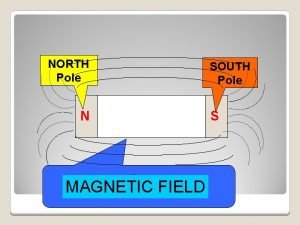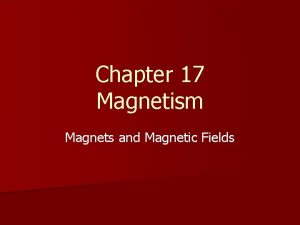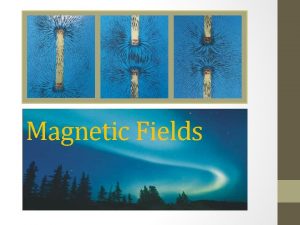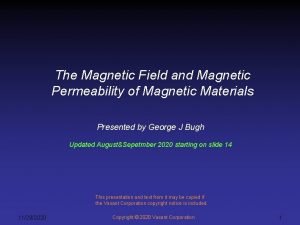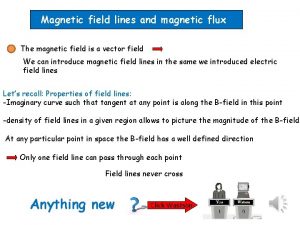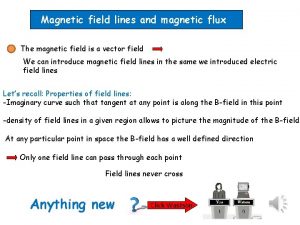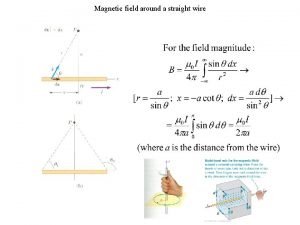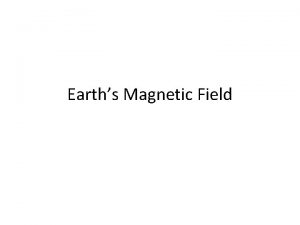Magnetic Field Overlying Solar Eruptive Regions and Kink











- Slides: 11

Magnetic Field Overlying Solar Eruptive Regions and Kink and Torus Instabilities Yang Liu Stanford University 2/25/2021 AGU/SPD 2008 1

Motivation Confined eruption Fulleruptionofof of kink instability. kink torusinstability. (FE hereafter) (KI (TIhereafter) 2/25/2021 AGU/SPD 2008 TRACE EIT TRACE 195 1600 171 A. movie. Courtesy of L. Green of Schrijver 2

Motivation Full eruption of Failed eruption of kink instability (FE) kink instability (KI) Full eruption of torus instability (TI) Q: what causes these different types of eruptions? 2/25/2021 AGU/SPD 2008 3

Motivation n MHD simulations (FE vs KI) 2/25/2021 AGU/SPD 2008 & Torok Courtesy: Kliem 4

Motivation n MHD simulation (KI vs TI) 2/25/2021 AGU/SPD 2008 Fan & Gibson (2007) 5

Motivation FE versus KI KI versus TI suggest gradient of the overlying field decides eruptions n(FE)<n(KI)<n(TI) 2/25/2021 AGU/SPD 2008 6

Methodology Select erupted filaments in active regions; n Calculate background field using a potential field source surface model; n At each height, compute overlying field by averaging horizontal field along the magnetic neutral line on the photosphere; n Derive decay index. AGU/SPD 2008 2/25/2021 n 7

Sample n We collect events from literature, and found: 4 failed eruption (FE) cases (Green et al. 2007); n 4 kink-instability (KI) full eruption cases (Green et al. 2007; Williams, et al. 2005); n 2 torus-instability (TI) full eruption cases (Schrijver et al. 2008). n 2/25/2021 AGU/SPD 2008 8

AR Flux Result (e 22 Max) ID Type Flare Date, Time (dd/mm/yy) n B_t @ 42 Mm (Gauss) 1 FE X 1. 1 06/06/00 1330 9026 5. 93 1. 51 58. 4 2 FE ------ 19/07/00 2330 9077 6. 76 1. 65 44. 2 3 FE ------ 27/05/02 1805 9957 6. 98 1. 71 51. 3 4 FE M 1. 0 02/05/03 0247 0345 6. 71 1. 62 99. 3 5 KI C 6. 8 07/04/97 1350 8027 1. 12 1. 75 12. 6 6 KI C 1. 3 12/05/97 0442 8038 0. 88 12. 3 7 KI M 6. 3 15/06/01 0952 9502 1. 99 1. 85 28. 3 8 KI X 2. 5 10/11/04 0156 0696 4. 65 2. 25 35. 9 9 TI M 4. 0 16/06/05 1910 0775 3. 70 2. 04 26. 4 10 TI M 3. 7 27/07/05 0300 0792 4. 56 1. 74 33. 0 Decay index shows a clearly dividing line between failed eruptions and full eruptions, supportive of MHD simulations. AGU/SPD 2008 2/25/2021 9

Type FE KI TI KI+TI n n n Flux n Result (e 22 Max) 6. 60± 0. 33 1. 62± 0. 05 2. 16± 1. 25 1. 93± 0. 15 4. 13± 0. 43 1. 89± 0. 15 2. 81± 1. 48 1. 91± 0. 15 B_t (Gauss) 63. 3± 18. 0 22. 3± 9. 8 29. 7± 3. 3 24. 7± 8. 2 n(FE)<n(KI) & n(FE)<n(TI) support MHD results; n(KI)~n(TI) not support MHD results; B(FE)>B(KI) & B(FE)>B(TI), due to probably, F(FE)>F(KI) & F(FE)>F(TI) large active regions? Large active regions usually produce more events: n n Eruptions may be caused by other mechanisms; Initial heights of filaments are higher. 10

Conclusions MHD simulations suggest: n(FE)<n(KI)<n(TI). n This work indicates: n n(FE)<n(KI) & n(FE)<n(TI); but n n(KI)~n(TI); n Field strength at low altitude is much stronger for failed eruption than for full eruptions. n 2/25/2021 AGU/SPD 2008 11
 Magnetic moment and magnetic field relation
Magnetic moment and magnetic field relation Weber magnetic
Weber magnetic Force on a charged particle
Force on a charged particle What are plutons that cause overlying rocks to bow upward
What are plutons that cause overlying rocks to bow upward Magnitude of magnetic force
Magnitude of magnetic force Distinguish between magnetic and nonmagnetic materials
Distinguish between magnetic and nonmagnetic materials Magnetic field
Magnetic field Arahnodactilie
Arahnodactilie Classification de fredrickson
Classification de fredrickson Magnetic retentivity
Magnetic retentivity Characteristic of magnetic force
Characteristic of magnetic force Force exerted by magnetic field
Force exerted by magnetic field










